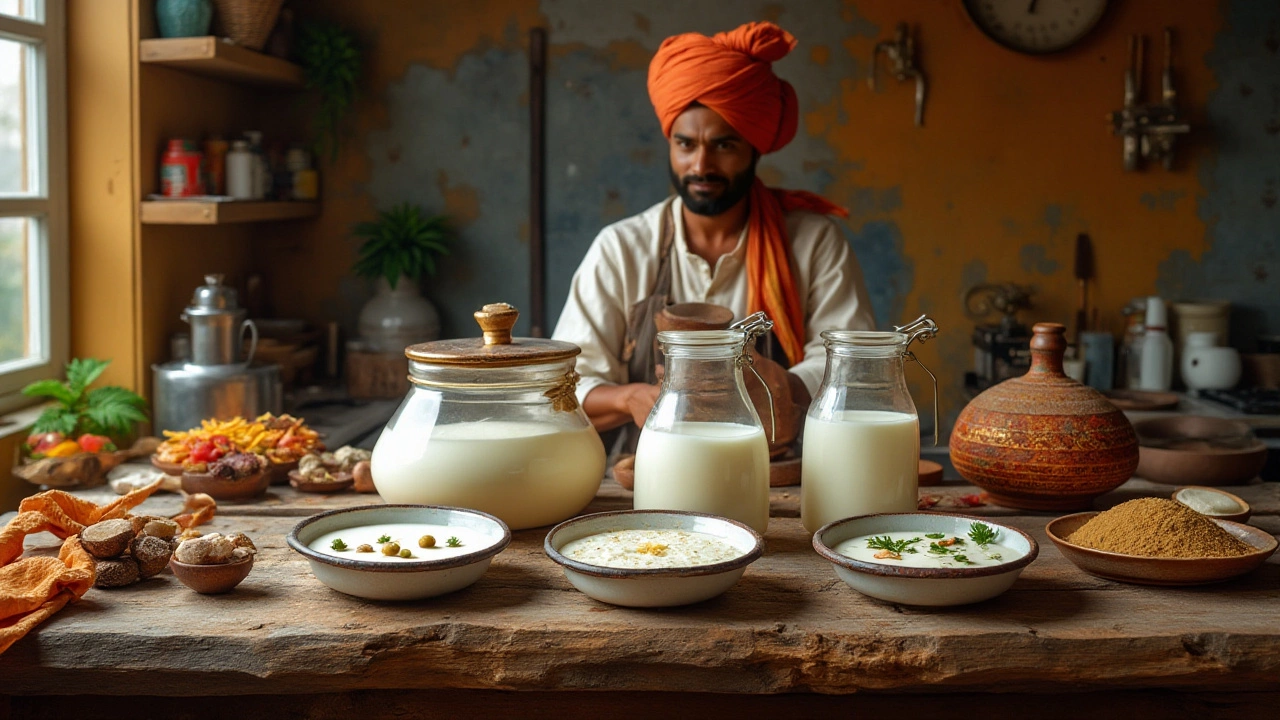Dairy in India – Everything You Need to Know
When talking about Dairy in India, the range of milk‑based foods that flavor every Indian kitchen, from fresh milk to aged ghee. Also called Indian dairy, it includes products like paneer, a fresh cheese that never melts, perfect for grilling or soaking in gravy, curd, the thickened yogurt that gives dosas their rise and chutneys their tang, and milk, the base for sweets, sauces, and everyday drinking. These staples dairy in India occupy the heart of regional plates and everyday meals.
Understanding how each product works lets you swap, tweak, or create new dishes without guessing. For instance, paneer’s firm crumb holds up in spicy curries, while curd’s mild acidity balances hot chilies in South Indian sambar. Milk, when reduced, becomes rich rasgulla syrup or creamy kheer, and when boiled with spices, turns into fragrant masala tea. The common thread is that all three need careful temperature control – too hot and paneer breaks, too cold and curd won’t set. Mastering these basics means you can season, sauté, or ferment with confidence, turning a simple kitchen into a flavor workshop.
India’s culinary map shows clear dairy patterns. In the north, ghee and paneer dominate biryanis and tikkas; the west loves buttermilk‑based drinks that cool the heat; the south relies on curd for dosa batters and coconut‑milk blends for sambars. Each region adapts the same core ingredients to local tastes – the same milk becomes sweet malai pakora in Delhi and tangy chhang in Punjab. Knowing these regional twists helps you pick the right dairy product for a dish, whether you aim for buttery richness or a light, probiotic lift.
Health‑wise, dairy offers calcium, protein, and probiotic benefits, but it also requires smart storage. Fresh milk should stay refrigerated and be used within a week, while paneer can last a few days if kept in its whey. Curd needs a warm, dark spot to ferment, yet once set, it stays fresh for up to ten days in the fridge. If you ever notice milk curdling with lemon juice, that’s the same acid reaction you can harness to make paneer at home – just add the right amount of acid, strain, and press. These tricks let you turn everyday leftovers into kitchen treasures.
What You’ll Find Below
Below is a hand‑picked collection of articles that dive deeper into each dairy topic. From paneer vs tofu taste tests to the science of why lemon curdles milk, you’ll get practical tips, step‑by‑step guides, and nutrition facts that make using dairy in Indian cooking easy and enjoyable. Scroll down to explore the full range of recipes, techniques, and health insights tailored for every skill level.

Discover the Varieties of Milk Consumed in India
India, a nation renowned for its culinary diversity, embraces a wide array of milk types, each playing a vital role in its traditional recipes. From the creamy richness of buffalo milk to the distinct taste of camel milk, understanding these types can unlock new flavors in cooking. This article delves into the various kinds of milk prevalent in Indian cuisine, offering insights into their uses and benefits. Whether you're a seasoned cook or a curious enthusiast, uncover the secrets of Indian dairy choices and how they enrich your dishes.